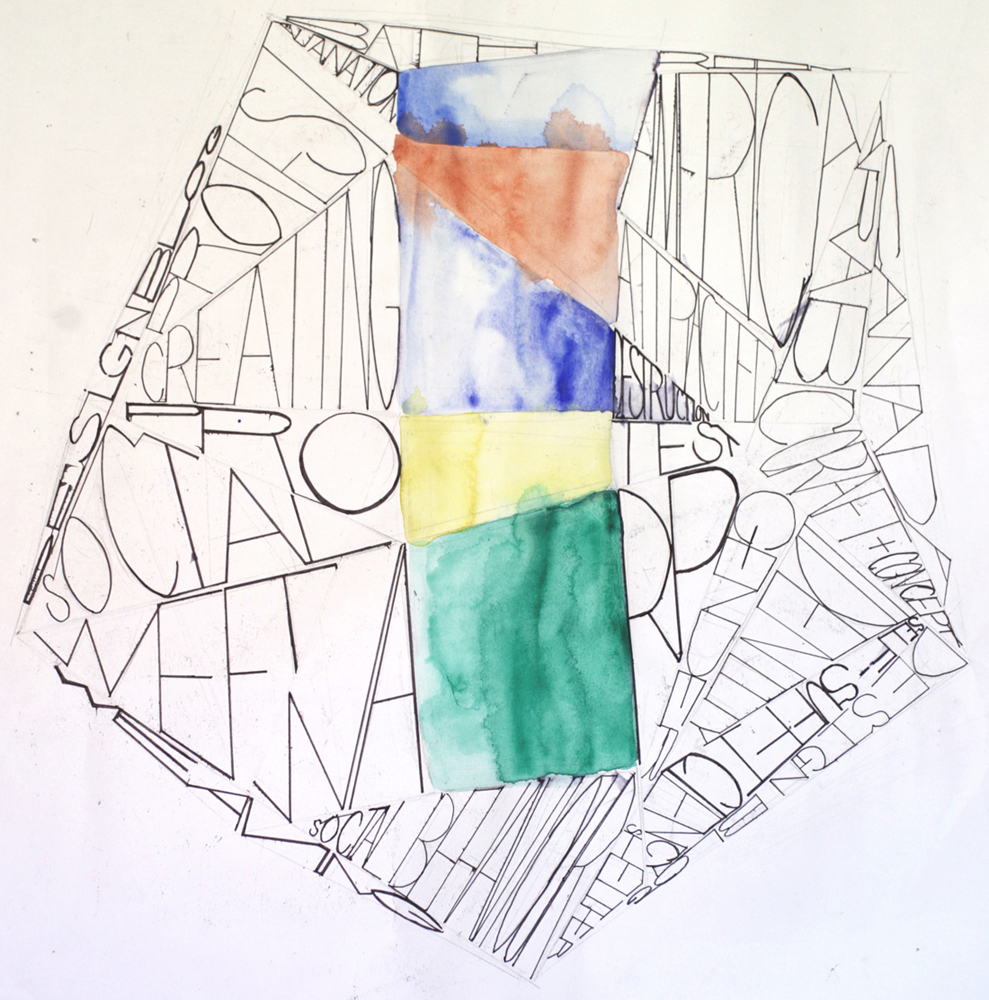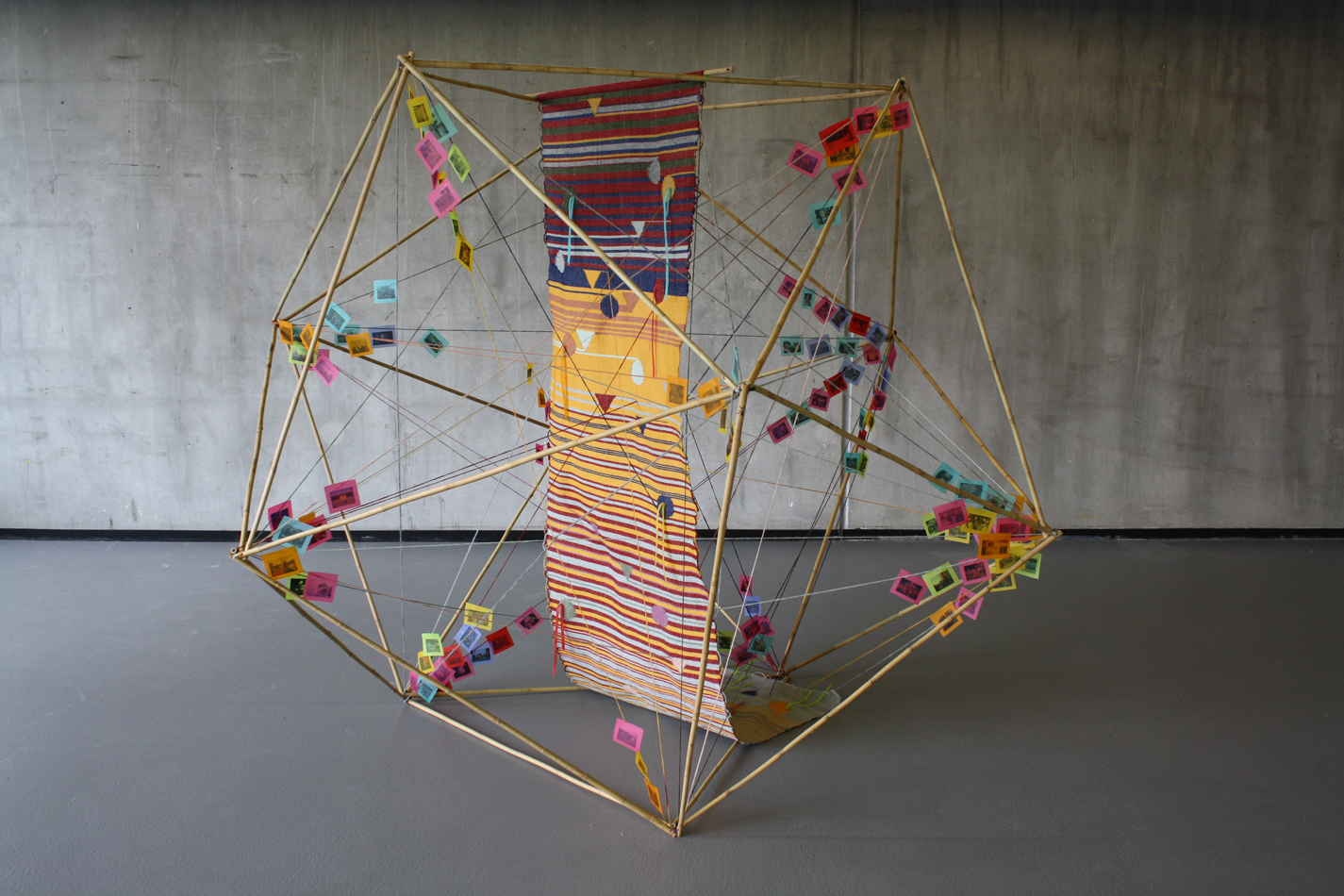Through my browsing on the designblog I stumbled upon different tags/keywords. Each played a vital part in leading to my final destination: https://designblog.rietveldacademie.nl/?p=25122.[x] In this final state of my browsing I found a structure of several dimensions and connections, where each point leads to the other. I let this be symbol of my browsing by visualizing each tag as part of this structure. As the result I create the diagram of my browsing.
"protest" Tag
Weaving Designblog
Wednesday, April 9, 2014
Weaving through the paradoxes and dilemmas in protesting
Wednesday, April 9, 2014
After clicking around this Designblog, I came across the post about Caroline Lindo’s thesis work ”The Surface of Protest”. The post is called ”Creating Destruction” which i find quite an intriguing contradiction. In her thesis project Caroline Lindo is investigating the meaning of protesting, different ways of doing so and which meaning they each imply. She essentially aims at answering the question: ”What is the most efficient – yet morally just – way of protesting?”
I would indeed like to know the answer to this question.
Lindo is directly relating the rules and structures of society and economics to the craft of weaving which apparently is also quit a rigid system (written in the attached PDF). Lindo tells us of have the warp (the amount of lengthwise yarns, that are held in tension within a frame, for threads to go under and over), within the art of weaving, has symbolized the basic structure of living which humans have to accept. The weft (the thread or yarn pulled through the warp) represents all the choices and decisions humans make for themselves in life.
I find this symbolism quite moving.
To me it seems that with this as the background, Lindo is reconsidering which weft to take, instead of using the one given to her by society. Can you even make a protest using the ”weft” given to you by society or do you have to cut all of these threads and come up with new ones yourself? Will anything constructive aspire from this? Is it hypocrisy to use the tread – the means, structure, environment given by society – in making protest? Or is it not? These are all questions she is investigating throughout her thesis.
As a research field she attended Occupy Amsterdam, which went worldwide in 2008 as a reaction on the financial crisis. She is studying the way of protesting through the tent-cities, which occurred during the same events. I always find it quite striking whenever someone manages to making such an abstract theme tangible, as Lindo does.
Twice Four /Theses TXT
Friday, October 19, 2012
All Essays by the graduation year 2012 of the Textile Department,
students are: Ellie Duiker /Kimono Parameters – kijken, vertalen, dragen
Isabel van Gool /Het was er -Over Fotografie
Jasmin Koschutnig /Dagen van Acryl – Spinnen tegen verspilling
Elisabeth Leerssen / Use Your Ignorance
Caroline Lindo /Surface of Revolution
Sara Martin / Incrementum – Growing Surfaces
Sylvia Wozniak /De Tuin van het Vergeten Verbond
designed by Alexander Shoukas (designer GRA website)
available for €10,00 at the Textile Department or Bureau Rietveld
Creating destruction
Thursday, October 18, 2012
[publication of graduation essay by Caroline Lindo 2012
I wrote this thesis “Surface of Revolution” for anyone who – openly or secretly – wants radical change in our current financial and political system and I hope my words can inspire them to find out how they want to position themselves within this time of change.
A Surface of Revolution is a three dimensional surface, shaped by rotation around its axis. I chose this title because it relates to the current uproar across the world in which people are also trying to turn things upside down, and because I will use the protest tent cities and its actual surfaces as the
parameters for my concept. I recognized the fact that there is a class problem in the world and that that problem needs to be dealt with. In this thesis I will study Occupy and the tent and I’ll try to define my way of protesting. I’ll describe the many different kinds of protest I encountered during Occupy and how I am finding my own place within activism. In the end, I hope to find out what my own ethical truth is in respects to changing this class problem in society and find out if there is a way to do it that can apply to bringing down any given system. Violently, non violently, creative or destructive or a
combination of those together. In my work I am searching for this balance too, I am physically acting out the dilemmas and choices I have to make in order to find my own way of protesting.
The main question I am asking myself here is: What is the most effective and still ethically just way for me to attempt to collapse a system? My thesis is about the dilemma’s I faced in regards to protesting. There is the option to destroy, the option to create and all the shades in between. Do I have to choose, and if I feel that I do: how can I make a well weighed decision?
To make this choice I started visualizing creation and destruction, after that I made game rules to play out the different options. In this thesis I draw parallels between the inside and outside of the (“Occupy”) protest tent cities, the tent frame and the structure of the fabric. With thesis ingredients I created my own surface of revolution. A reflection of the protests around the world and my own journey through all the dilemmas I encountered there.
![]()
Download thesis by Caroline Lindo: Surface of Revolution
[images of Caroline Lindo's graduation show
link to website: http://carolindo.tk and http://carolindo.tumblr.com (same one)




